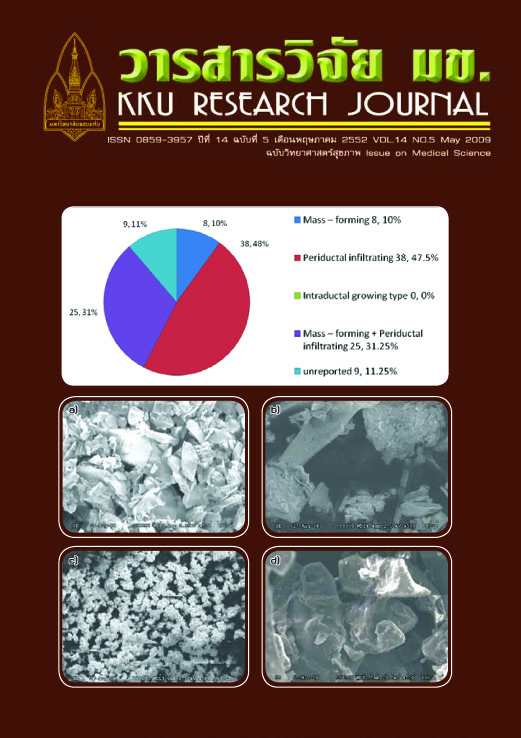Antioxidation and antimutagenicity of five plants in Euphorbiaceae in plant genetics conservation at Khok Phutaka, amphur Phuwiang, Khon Kaen (Thai)
Main Article Content
Abstract
Antioxidative, mutagenic and antimutagenic activities of six crude extracts from five medicinal plants of Euphorbiaceae were investigated in this study. Antioxidative activity was examined using DPPH radical scavenging assay while mutagenicity and antimutagenicity were evaluated by bacterial mutation assay. The total phenolic content was also determined using the Folin-Ciocalteu method. The results demonstrated that the extract of Phyllanthus emblica (twig/stem) had strongest antioxidative activity. The order of higher to lower antioxidative activity of the other extracts are from Aporusa villosa (twig/stem) > A. villosa (leaf) > P. virgatus (whole plant) > Sauropus quadrangularis (whole plant) > P. amarus (whole plant) with EC50 of 4.92, 5.56, 5.87, 6.47, 22.94 and 23.76 µg/ml, respectively. The EC50 of these extracts correlate with their total phenolic contents.
All extracts did not show mutagenicity in both - S-9 mix and +S-9 mix conditions in the tested Salmonella typhimurium TA98 and TA100. The antimutagenicity studies revealed that P. emblica extract showed the highest activity to TA98 in the absence of S-9 mix condition with the standard mutagen AF2. The order of antimutagenicity for the other extracts are P. virgatus > P. amarus > S. quadrangularis > A. villosa (leaf) > A. villosa (twig/stem). For TA100 in the presence of S-9 mix and AF2, all extracts had very low antimutagenicity except A. villosa (leaf) extract.All extracts showed strong antimutagenicity to both TA98 and TA100 in the presence of S-9 mix and 2-AA. Therefore, it is concluded that these five plants in Euphorbiaceae have potential for future development of herbal health products.


